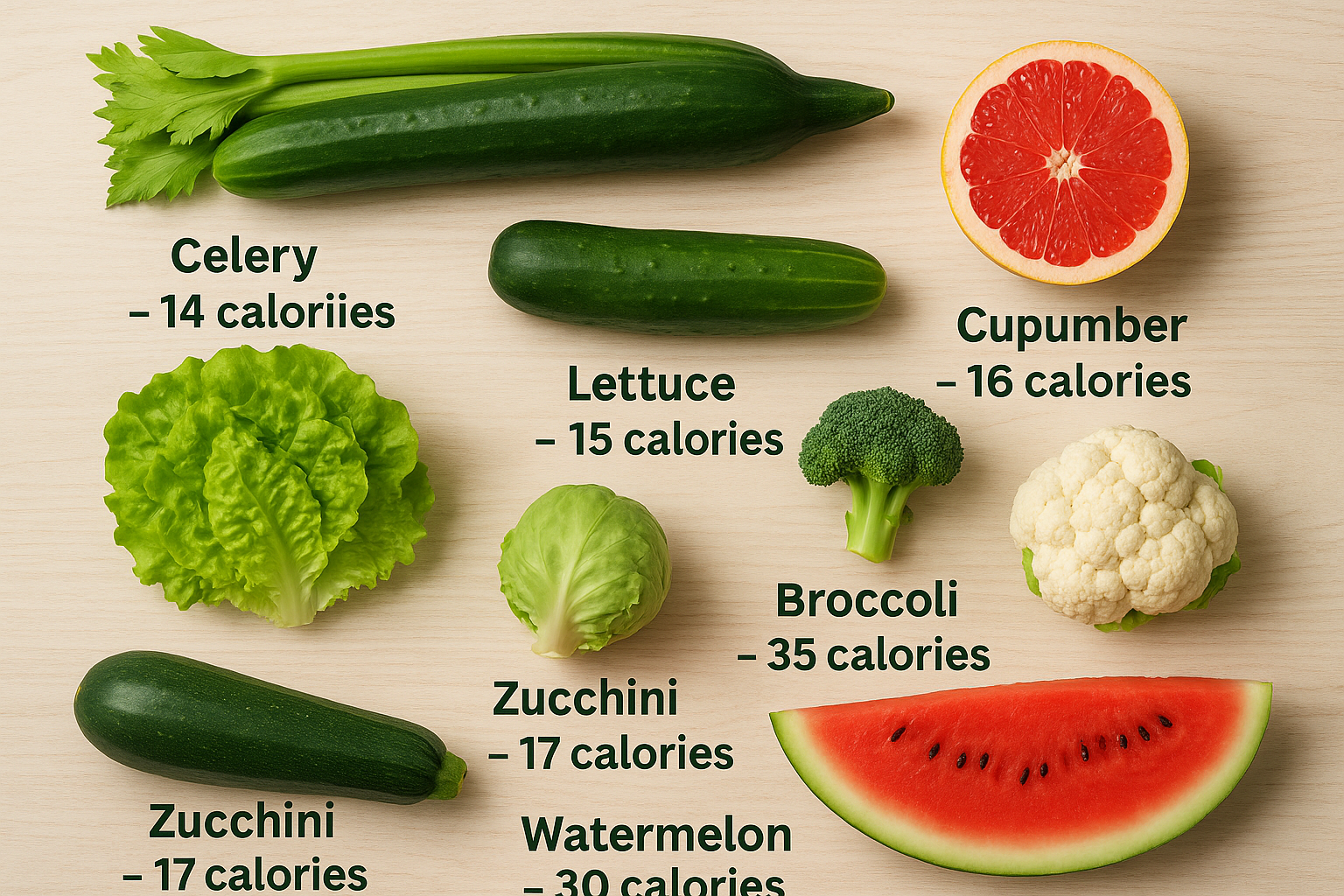Can eating certain foods actually help you burn more calories than you consume?
The idea of negative calorie foods has been floating around diet and wellness conversations for years. It's an appealing thought: you eat something healthy, and your body works so hard to digest it that you burn more calories than the food provides-leading to weight loss, effortlessly.
But is there any truth to this?
In this article, we’ll break down what negative calorie foods are supposed to be, what science really says about them, and how you can use smart food choices to support weight loss without falling for myths.
What Does “Negative Calorie Food” Mean?
The term negative calorie food refers to a theory that certain foods take more energy to digest than they provide in calories. In other words, you end up with a net loss of calories just by eating them.
This idea is loosely based on something real called the Thermic Effect of Food (TEF)-the energy your body uses to chew, digest, absorb, and process nutrients from your meals.
While TEF is a real metabolic process, it usually accounts for only 5–15% of your daily energy expenditure. And while fibrous or protein-rich foods may take more energy to digest, there’s no strong scientific evidence that any food burns more calories than it contains.
Do Negative Calorie Foods Really Exist?
In short: not exactly.
No research has confirmed the existence of true negative calorie foods. But that doesn’t mean the idea is completely useless.
Many foods commonly labeled as “negative calorie” are:
Very low in calories
High in fiber
High in water content
Nutrient-rich and filling
So while they might not cause a calorie deficit by digestion alone, they can help support a calorie deficit overall-which is key for weight loss.
Commonly Claimed Negative Calorie Foods
Here are some foods often referred to as negative calorie foods, along with their calorie content per 100g:
Celery – ~14 calories
Cucumber – ~16 calories
Lettuce – ~15 calories
Zucchini – ~17 calories
Grapefruit – ~42 calories
Broccoli – ~35 calories
Cauliflower – ~25 calories
Watermelon – ~30 calories
All of these are excellent choices in a low-calorie diet, even if they don’t burn more calories than they provide. They're refreshing, fiber-rich, and perfect for filling up your plate without overloading on calories.
How These Foods Help With Weight Loss
Here’s how these foods can genuinely support your fat loss efforts:
High in fiber: Fiber slows digestion and helps you feel full longer, reducing the likelihood of overeating.
High in water: Foods with high water content add volume without adding calories, which helps with satiety and hydration.
Low in calorie density: You can eat larger portions for fewer calories, which is helpful when managing hunger on a diet.
Think of them as volume foods-they bulk up meals and snacks without spiking your calorie intake.
Can You Eat Only These Foods and Lose Weight?
Technically, eating just celery or lettuce all day might lead to weight loss due to a severe calorie deficit-but that’s neither healthy nor sustainable.
A diet made up entirely of low-calorie vegetables lacks essential nutrients like protein, healthy fats, vitamins, and minerals. You might lose weight quickly, but you’ll likely feel tired, hungry, and eventually burned out.
Instead, use these foods as part of a balanced plate:
Combine them with lean proteins (like chicken, eggs, or tofu)
Add healthy fats (avocado, olive oil, nuts)
Include complex carbs if your diet allows (quinoa, sweet potato, legumes)
This approach supports long-term fat loss, energy, and health.
A Better Approach: Focus on Low-Calorie, High-Nutrient Foods
Rather than chasing the myth of negative calorie foods, aim to fill your diet with low-calorie, high-nutrient whole foods that support your goals:
Leafy greens
Cruciferous veggies (broccoli, cabbage)
Lean proteins (chicken breast, tuna, eggs)
Whole fruits (berries, apples)
Legumes and beans
Greek yogurt and cottage cheese
These foods don’t just keep calories in check-they fuel your body with the nutrients it needs to burn fat, build muscle, and feel your best.
Conclusion
The concept of negative calorie foods might sound too good to be true-because it is. There’s no scientific proof that any food burns more calories than it provides. However, many of the foods that fall under this label are still excellent additions to a weight-loss-friendly diet.
Use them smartly: load your plate with high-fiber, low-calorie veggies, hydrate with water-rich fruits, and pair these foods with protein and healthy fats for a satisfying, balanced approach to eating.
Want a bit of help putting it all together? Lifter Life’s expert meal plans are built with real food-including fiber-rich fruits and vegetables-to support weight loss without fad diets or extreme restrictions.

